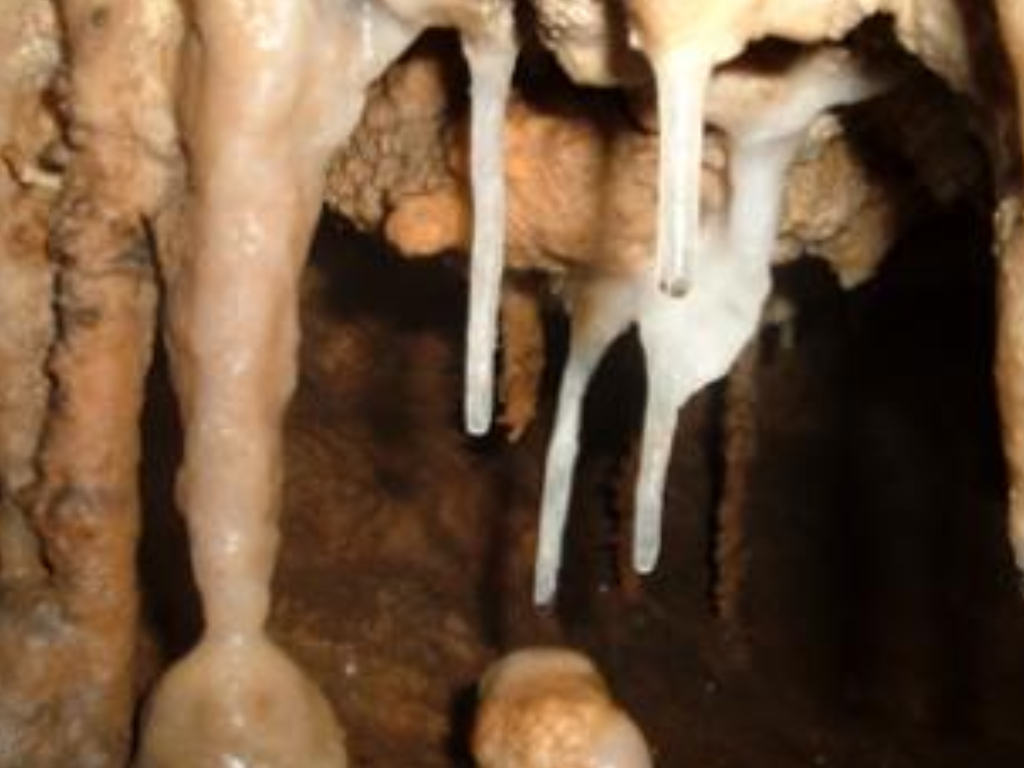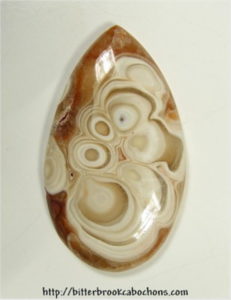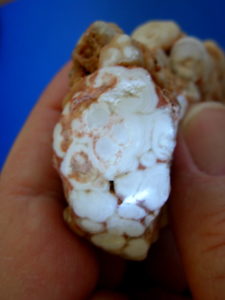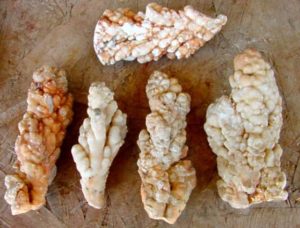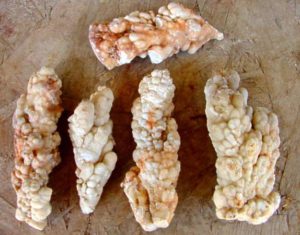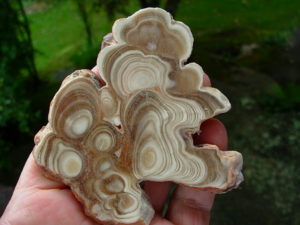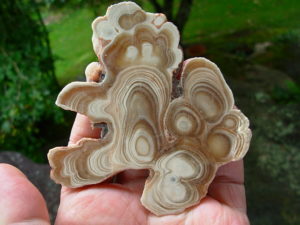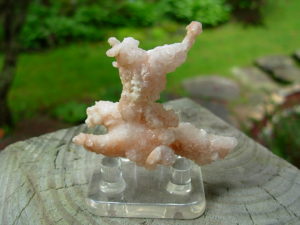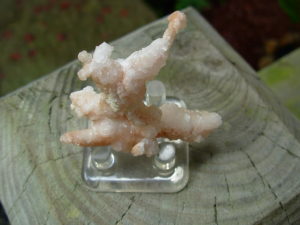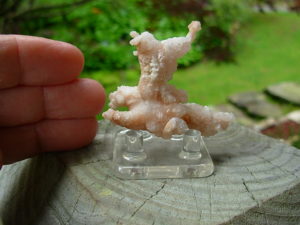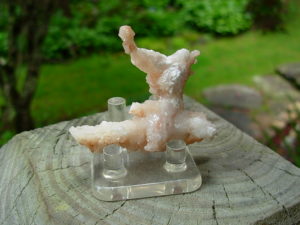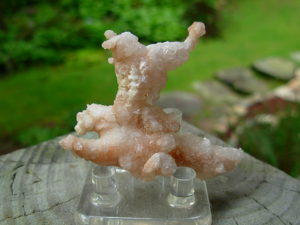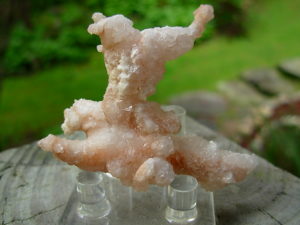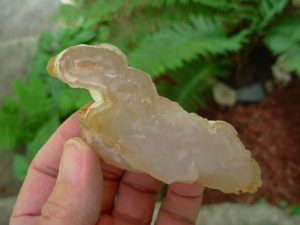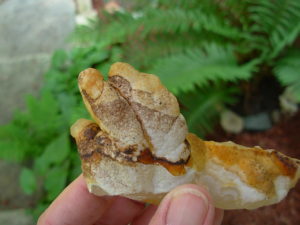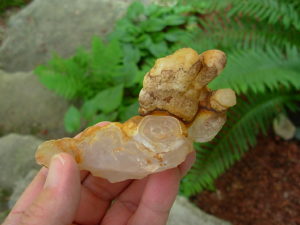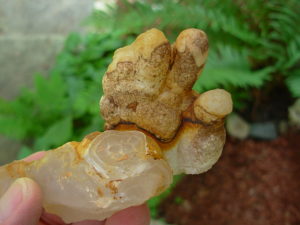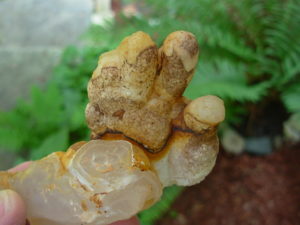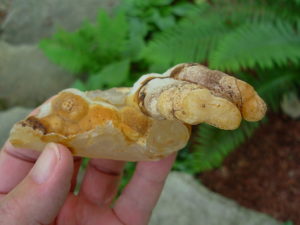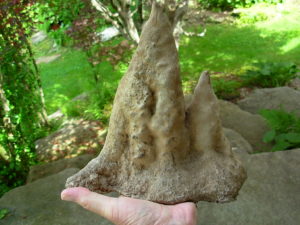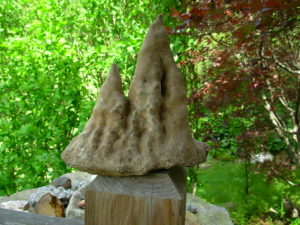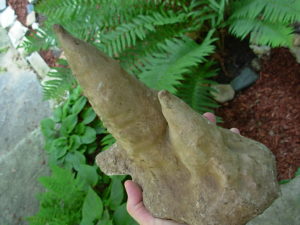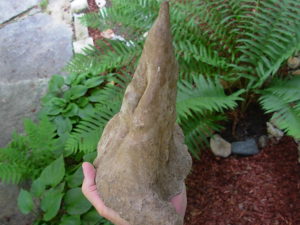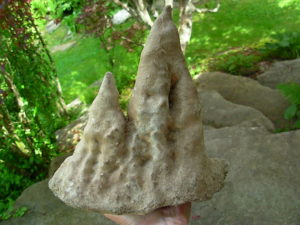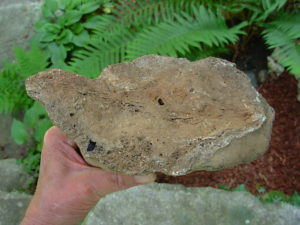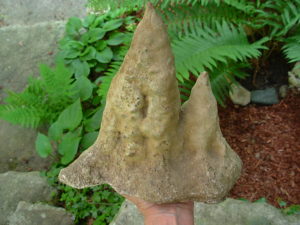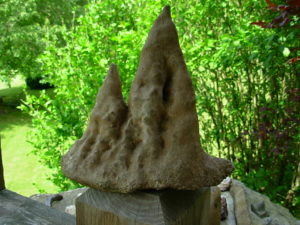Stalactites Speleothems (and Stalagmites)
Stalactites Speleothems from the Ozark Mountain Regions of Missouri
Stalactites Speleothems...A speleothem is commonly known as a cave formation or decoration and is a secondary mineral deposit formed in a cave. Speleothems are typically formed in limestone or dolostone solutional caves. The word speleothem (from the Greek for "cave deposit") is derived from the Greek words spelaion meaning "cave" and thema meaning "deposit".
The speleothems with which most people are familiar are stalactites and stalagmites. Stalactites grow down from the cave ceiling, while stalagmites grow up from the cave floor. It’s easy to remember which is which: Stalactites have a "T" for top and stalagmites have an "m" for mound, (or “G” for ground).
Speleothems actually form because of water. Rainwater seeps through cracks in the rock. As it passes through organic material, it picks up carbon dioxide gas, creating carbonic acid. This weak acid passes through joints and cracks in limestone. The mineral calcite is dissolved from the limestone rock in which a cave is formed. When this water that now holds the dissolved rock is exposed to the air in the cave, it releases the carbon dioxide gas, much like when a bottle of soda is opened. As the carbon dioxide is released, calcite is precipitated (redeposited) on cave walls, ceilings and floors.
As the redeposited minerals build up after countless water drops, a stalactite is formed. If the water that drops to the floor of the cave still has some dissolved calcite in it, it can deposit more dissolved calcite there, forming a stalagmite. Speleothems form at varying rates as calcite crystals build up. Several factors can determine the rate of growth. Two important factors are the temperature outside (which affects the rate of decay of plants and animals, hence the amount of carbon dioxide in the soil), and the amount of rainfall.
The shapes of speleothems are determined by how the acidic water enters the cave (by dripping, seeping, or splashing) and how the water stands or flows after entering the cave. Most scientists believe that the color of speleothems are determined by the mineral content. Pure calcite is white and almost colorless. Iron and other minerals, as well as acids from surface vegetation, combine with calcite crystals to add shades of red, orange and black to the color of speleothems. Others believe that humic and fulvic acids in the soil may also contribute to speleothem coloration.
Item# SPE05107903
Group of 5 Stalactite Kokoweef Cave Onyx Speleothems from California

California Cave Onyx
These specimens were legally removed from a private claim at Kokoweef Cavern in the Ivanpah Mountains in San Bernadino County, California over 30 years ago, collecting is no longer allowed.
Kokoweef Cave Onyx yields fantastic patterns when cut, polishes nicely, or makes nice display pieces. Together they weigh 1.30 lbs., and are up to approx. 4" x 2" x 1.1". You get all 5 pieces
Cave Onyx is a calcium carbonate accretion from these caverns. Legend has it that in the 1920s, a man discovered an underground river full of golden nuggets in these limestone caverns. These were collected at Kokoweef Caverns, California in the 1970s. This area is no longer open to collectors. The current owners are in the process of searching for the legendary under ground gold laden river. These would make a great addition to your mineral collection!
Item# 2-CVONX09188023
Stalactite Kokoweef Cave Onyx Slice from California

California Cave Onyx
This specimen was legally removed from a private claim at Kokoweef Cavern in the Ivanpah Mountains in San Bernadino County, California over 30 years ago, collecting is no longer allowed. Kokoweef Cave Onyx slabs yield fantastic patterns when cut, polishes nicely, or makes nice display pieces.
This slab weighs 2.8 oz or 0.175 lbs (79.5g) and measures 3.8 x 3.4 x 0.27" (96.5 x 88.1 x 7 mm)
Helectites
A helictite is a distorted form of stalactite, typically resembling a twig. It is a speleothem found in limestone caves that changes its axis from the vertical at one or more stages during its growth. They have a curving or angular form that looks as if they were grown in zero gravity. They are most likely the result of capillary forces acting on tiny water droplets, a force often strong enough at this scale to defy gravity. Helictites may also be the most delicate type of cave formations. Helictite forms have been described as ribbon helictites, saws, rods, butterflies, trees, "hands", curly-fries, and "clumps of worms". They are a unique treasure.
Item# 1-HELIC06035591
Twig Helectite from Virginia

Twig Helectite from Virginia
This specimen was legally removed from a privately owned Virginia Cavern in the 1940's. We procured this item in Quartzsite, Arizona in 2004. Specimen comes with the 1-1/2 inch square 4 peg stand shown in the photos.
This Helectite weighs (17.5g) and measures 1.9 x 1.6 x 0.6" (50 x 40 x 15 mm)
Item# 1-HELIC06035591
Hand Helectite from Missouri
$42.00

"Hand" Helectite from Missouri
This specimen was legally removed from a privately owned Ozark Mountains, Missouri cave. We procured this item in 1994 from the cave owner. Specimen is an excellent example of a "Hand" stalactite.
This Helectite weighs 4.96 oz or 0.3 lb (141g) and measures 4 x 2.2 x 1.6" (10.3 x 5.6 x 4.2 cm) the "Hand" measures 2" (5.3cm) tall, 1.78" (4.5cm) wide and 0.92" (2.3cm) thick
This Helectite was obtained legally and was found in the Ozark Mountains on privately owned land.
This speleothem was harvested post-growing only with minimal disturbance to the ecosystem around it. We do not endorse or encourage removing growing speleothems from live caves!
Item# SPE060321011
9 Inch Stalagmite Speleothem from the Ozarks

This is a magnificent and extremely rare two mound stalagmite speleothem formation standing 9 inches tall on a 9.6 inch wide base" as shown in pictures. This is an extremely old specimen that has been out of the cave for well over a hundred years.
It is a museum grade stone artifact grown from the water dripping on the cave floor and depositing it's minerals to form this fantastic natural wonder. Specimen was collected in the Ozark Highlands region of Missouri. A valuable addition to any collection.
This formation was legally harvested, post-growing, out of a privately owned cave. This formation is guaranteed to be from a private cave and gathered from the cave floor. These are very rare, special and ancient minerals.
This specimen weighs 92.4 oz or 5.77 lbs (2.62kg) and measures 9.6 x 9 x 5 inches (24.3 x 22.8 x 12.8 cm) Tthe mounds stand 9" (22.8 cm) and 6.1" (12.8 cm)
This Stalagmtite was obtained legally and was found in the Ozark Mountains on privately owned land. This speleothem was harvested post-growing only with minimal disturbance to the ecosystem around it. We do not endorse or encourage removing growing speleothems from live caves!

